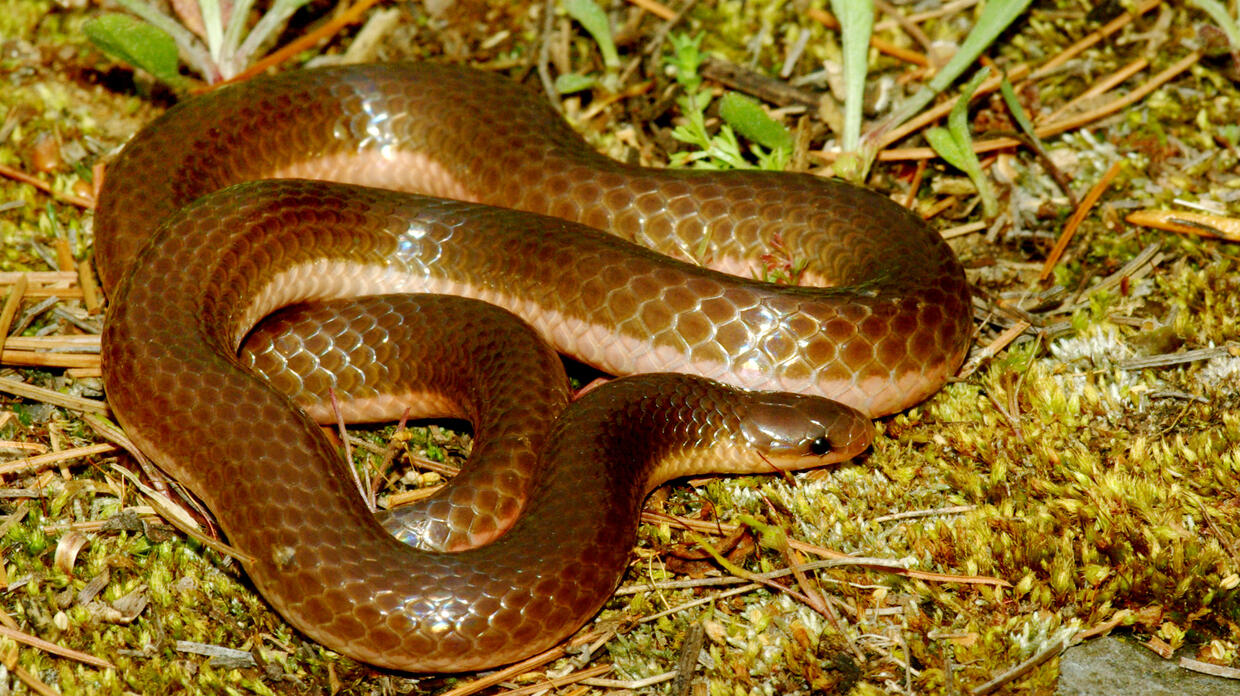Fast facts
Common name: eastern wormsnake
Scientific name: Carphophis amoenus
Range in MA: Connecticut River Valley in Hampden and Hampshire counties
Conservation status: Listed as threatened in Massachusetts
Fun fact(s): Loves to eat earthworms, somewhat resembles an earthworm
Similar species: Juvenile red-bellied snake
Identification tips: Look at the neck: there is no constriction between the head and body
Description
Eastern wormsnakes are small, smooth-scaled, and glossy. From above, they appear brown to near black. Their lower sides and bellies are reddish-pink. With sloping heads, tiny eyes, and lack of constriction behind the head, in some ways they resemble the earthworms they consume. Their tails are short and tipped with a hard point. Adults range in length from 7–14.5 inches.
If you see one
Because they are listed as threatened in Massachusetts, please maintain a safe, respectful distance. Avoid trying to handle or otherwise disturb them.
To help with conservation efforts, please submit your observations with us. Either:
- create an account in the Heritage Hub, or
- complete and mail a Rare Animal Observation Form for one-time observations.
Your reports provide critical information that informs future habitat management and wildlife conservation for future generations.
Habitat
Eastern wormsnakes reach the extreme northeast end of their range in Massachusetts. They prefer loose, sandy, damp soils and move up and down soil columns in response to moisture levels and/or their prey. In spring, when surface soils are more moist, they can be found under stones or logs. In summer or during drought conditions, they disappear further underground.
Life history
Mating takes place in spring or fall. Females deposit eggs in June or July. Clutches range from 1–8 eggs. Babies hatch in about 7 weeks at a length of 3–4 inches. Eastern wormsnake diets consist of worms and soft-bodied insect larvae.
Management and conservation
Management and conservation best practices include:
- Conducting further research
- Adding public lands in areas with suitable habitat
- Limiting development and construction of impervious cover in areas with habitat

